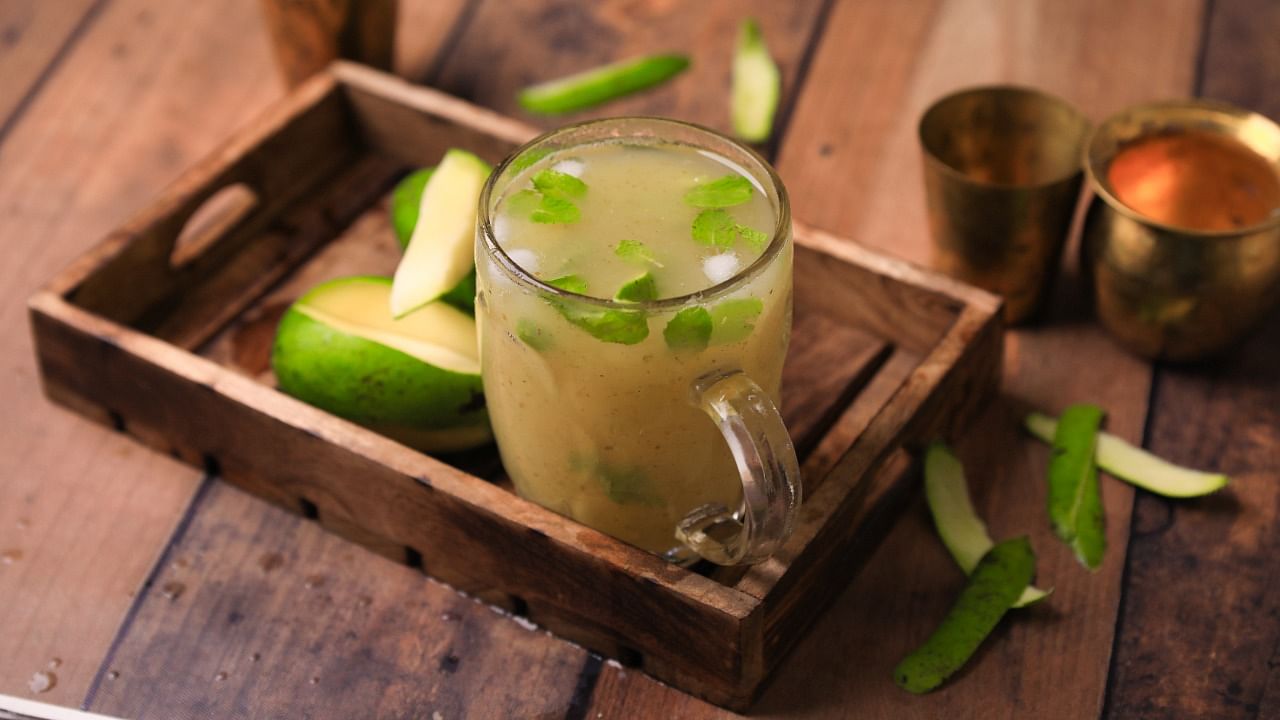
India is facing one of its hottest summers. Amid these apocalyptic conditions, the soul desperately seeks some reprieve an aerated drink can barely satiate.
As with several other modern innovations, India can boast of having the upper hand with knowing how to cut (if not beat) the heat. Our ancient wisdom comes bottled up for the summer as delicious concoctions, conceptualised centuries ago to cool you down and keep things healthy.
Our tray of traditional summer coolers is varied, and the aam panna remains the undisputed champion. The raw mango drink is emotionally rooted in childhood nostalgia and, historically, in Ayurveda.
Nidhi Pandya Bhanshali, a third-generation Ayurvedic practitioner and educator, explains, "The drink stimulates the appetite. Rock sugar or mishri powder cools the sourness of the mango."
A mention of aam panna is cue for the memory to fill your mouth with the refreshing, tangy taste of the drink—as so happens with another celebrated cooler, shikanji.
Often confused with its lemonade sibling, shikanji's popularity persists by and large across north Indian streets and households. Nothing quenches a Delhiite's summer thirst better than this sweet-salty-spicy magic potion, best served with generous lumps of ice. Only one other drink comes close: the Banta.
The distinct pop and fizz sound of a Banta bottle being cracked open breathes life into every street corner of the city. An über local soda-fied rendition of lemonade, the Banta typically comes in a Codd-necked glass bottle with a marble stopper (which gives the drink its name). And at about Rs 20 a glass, it gives you more value for money than any off-the-shelf can of carbonated sugars would.
While the Banta soda cannot claim any Ayurvedic merit, panchasara panakam, a mélange of parushaka (phalsa) and natural sweeteners like dates and raisins, finds a mention in the Ayurvedic text of Ashtānga Hridayam.
Ayurvedic doctor from Kerala Aiswarya Santhosh tells DH that the summertime benefits of phalsa sharbat are aplenty, from reducing body heat to relieving anorexia and acting as a cardiac tonic.
Kokum and bael sharbats are other classic seasonal favourites, though Santhosh points out that they are essentially heating in nature.
"Adding cooling ingredients like mishri or sugarcane juice and digestive spices like jeera powder can balance the heat out," she recommends.
Celebrity nutritionist Rujuta Diwekar, in a recent Instagram post, meanwhile outlined the digestive benefits of the Indian native plant vetiver, which the layperson would be familiar with in its evergreen form (literally) as the khus drink.
"Older generations followed many Ayurvedic principles and were thus less affected by diseases. They had a daily routine, seasonal regimen, good diet and lifestyle. The diet and traditional food recipes were made for balancing the dosha vitiation in each weather," Santhosh says.
So what exactly happens to the body during summers?
"The digestive 'fire' becomes low, and thereby, people lose appetite. At the same time, because all the body's channels are open, people lose a lot of water through sweat," said Bhanshali.
"This is what these drinks are designed for," she explains. "One of the reasons most of these drinks are sour is because the taste (amla rasa in Ayurveda) kindles the fire and stimulates the appetite, which is called rucya."
In addition, Ayurveda encourages a dietary lifestyle in the summers that is devoid of heavy, fatty foods.
(Tanvi Akhauri is a freelance journalist and features writer covering the arts and culture beat)